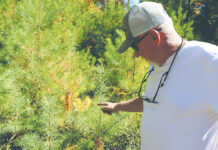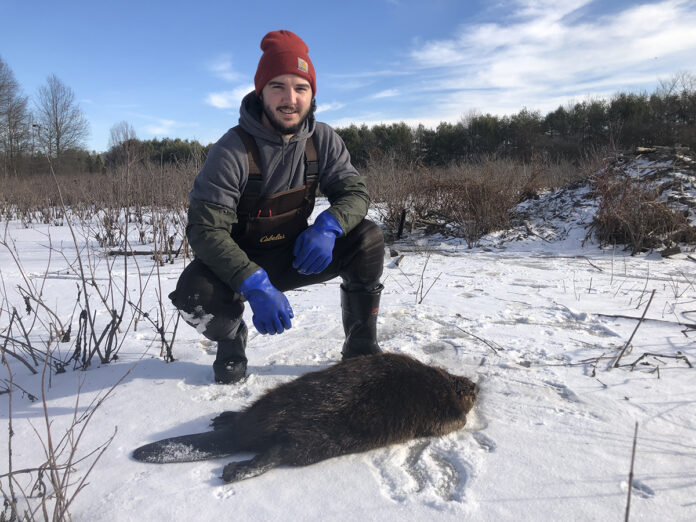By Matthew Pollock | Guernsey Soil and Water Conservation District
Beaver season in Ohio is soon coming to a close. It runs from Dec. 26 to Feb. 28 with no seasonal or daily limit. However, this was not the case not too long ago.
From the 1600s to the early 1800s, beavers were trapped and sought after by not only the American settlers but French fur trappers, as well. Beavers were highly valued because their fur was used in the production of high-dollar beaver felt hats. Their castorium glands were used in many perfumes for women. With no laws to regulate the number of beavers harvested, the population began to decline.
According to the Ohio Wildlife Project, “By 1830, the beaver was extirpated from Ohio. It was over 100 years before evidence of beavers in Ohio was seen again. The first was in Ashtabula County in 1936. After a beaver dam caused flooding in 1946 in Columbiana County, a study revealed that there were approximately 100 beavers in 11 Ohio counties.”
It was not until the 1970s that beavers began to become noticeable. Through conservation efforts by the state, beavers began to thrive again after relocation efforts. Now, beavers can be found all over the state.
Trapping beavers
With a numerous population today, let’s talk about how to trap them. There are three types of traps that can be used to catch beavers. They consist of conibears, footholds and snares.
A conibear is a body-gripping trap that is designed to snap shut when the trigger is hit and dispatches the beaver almost instantly. The foothold does just what the name implies. It catches the beaver by the foot and holds it there. Snares are probably the least commonly used as they catch the beaver around the neck and restrain it.
The easiest way to catch a beaver is to set #330 conibears in the runs leading to the beaver’s lodge. Setting them in narrow channels where they actively travel works well, too.
You can also make a castor mound set that replicates what beavers do to mark their territory. It is essentially a mound of mud that they pull up on the bank and secrete some castor out of their glands to finish it off. A foothold trap can be placed in the water below the mound set. You can often catch a dominant beaver this way.
You may ask, why would someone want to catch beavers? They are very delicious! Back straps from a beaver will outcompete any steak you can get at a restaurant, or buy at a store. Don’t believe me? Go catch yourself a hefty beaver, cook it up and give it a try.
(Matthew Pollock is a wildlife/forestry specialist for Guernsey Soil and Water Conservation District. He can be reached at 740-489-5276.)













